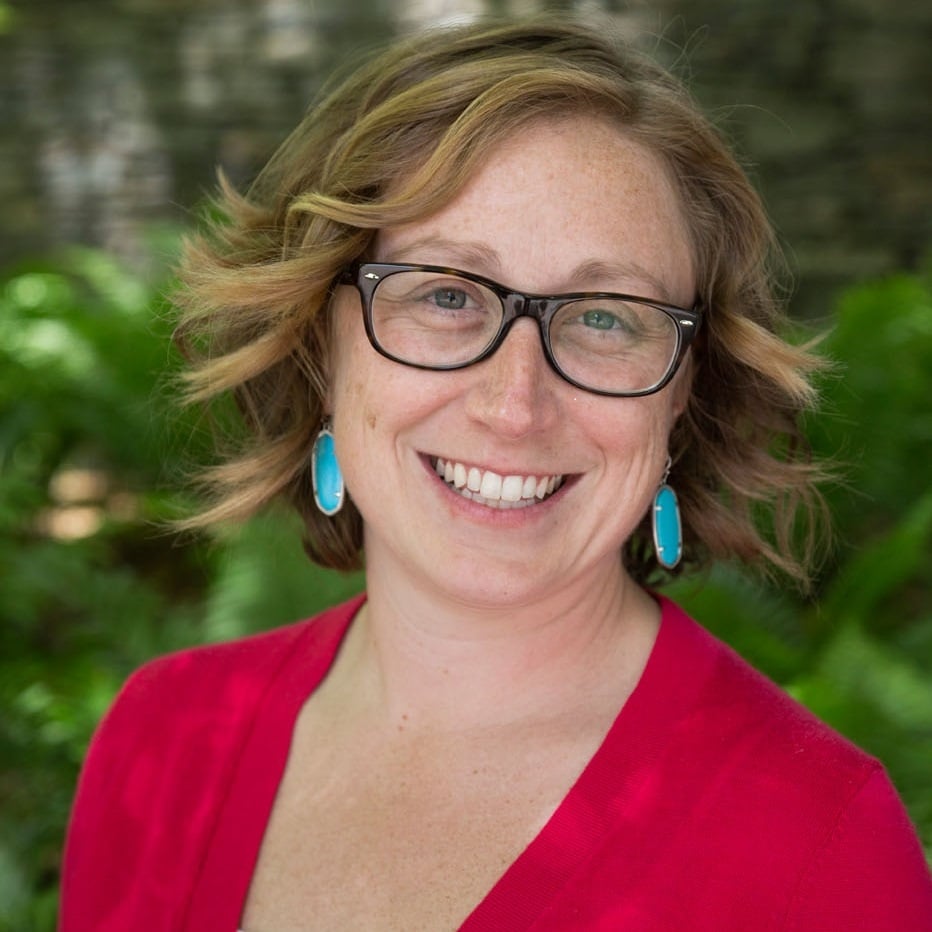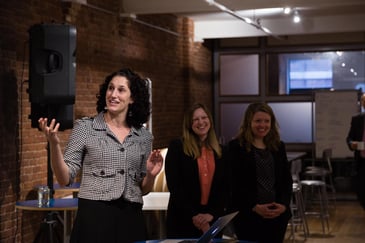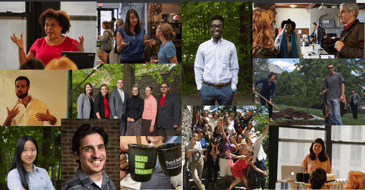The MBA Choice, Part III: How the Low-Residency Model Uses Technology to Facilitate Learning

This blog post is the third in a series highlighting the advantages of Bard’s unique low-residency approach to getting an MBA in Sustainability. If you missed the previous posts about how this approach strengthens learning and community and helps working professionals, check them out here and here.
We’re back again with another post on how our low-residency approach to an MBA in Sustainability beats out conventional and online programs.
As explained last week, when we set up Bard’s MBA in Sustainability, we utilized the latest way to organize a skills-based graduate program: a “low-residency” structure, also known as a “hybrid” or “one weekend a month + online”model. It has been the best choice for preparing our students with the business and sustainability skills they need to change the future.
We think of low-residency models as sitting in between conventional educational models on the one hand, and strictly online programs on the other. Conventional MBAs include the go-somewhere-for-two-years and take classes approach, as well as night school or every weekend programs that are entirely face-to-face. By contrast, in Bard’s low-residency structure, classes meet in person over an extended, four-day weekend once each month. There are five of these “residencies” over the course of each semester. The weekend residencies are supplemented by online webinar classes every Tuesday and Thursday night from 7 PM to 10 PM.
One of the most unique things about this low-residency approach is that we are leveraging technology and innovation to drive our sustainable learning. Bard’s program is not an “Executive MBA” or an “MBA Lite”. It is a full 60-credit MBA, the same as in a conventional program. Rather, technology has enabled us to deliver a full-bore MBA in a more efficient form, delivering 40% of the curriculum through live webinars. The online evening classes are not canned, pre-recorded lessons. They are interactive webinars, with a faculty member live on one end and twenty students on the other. These sessions, requiring active student engagement, effectively replicate good face-to-face lecture discussions.
The hybrid approach is new, made possible by ever improving webinar software that has been decently functional for only about five years. Our experience over this period supports the idea that that low-residency is in fact a better way to teach a skills-based, business and sustainability curriculum than conventional classroom approaches and is vastly superior to online only learning.
And along the way, we drive home a point which lies at the heart of our MBA in Sustainability: business, innovation, and technology can all be utilized in ways that further environmental and social goals.
Here at Bard, we pursue our vision of a sustainable future with a deeply practical approach to creating change. We make sure our students are the best at business, with an integrated core curriculum that covers every topic you need for business literacy. We use technology to make our low-residency program available to working professionals across the country. Our engaged faculty are not academics but business practitioners who also happen to be excellent teachers.
An MBA in Sustainability is not a niche degree; it is a bold and innovative opportunity to be at the forefront of the movement toward a just, prosperous, and healthy future. Using webinar software to deliver our low-residency program is a small example of the many ways we embrace innovation to further our work for a better world.
To learn more about our MBA Low Residency program, visit our webpage.
To sum up this extended series of blog posts on Bard’s low-residency approach to getting a MBA in Sustainability, here’s a run-down of the advantages we’ve discussed:
Low residency supercharges the advantages of face-to-face teaching by moving education into a retreat-like environment. It also replicates the convenience and working-professional friendliness of online teaching, but replaces canned lectures and chat room conversations with superior, interactive webinar based lecture-discussions.
The hybrid structure also puts cutting-edge practitioners in charge of teaching, and when combined with a great location, gives students access not only to the latest knowledge in sustainable business, but also excellent and engaged teachers, and networks of sustainability professionals. Low residency maximizes the benefits of a close-knit educational community, and finally, allows students to attend from all over the country.
Enough said.





